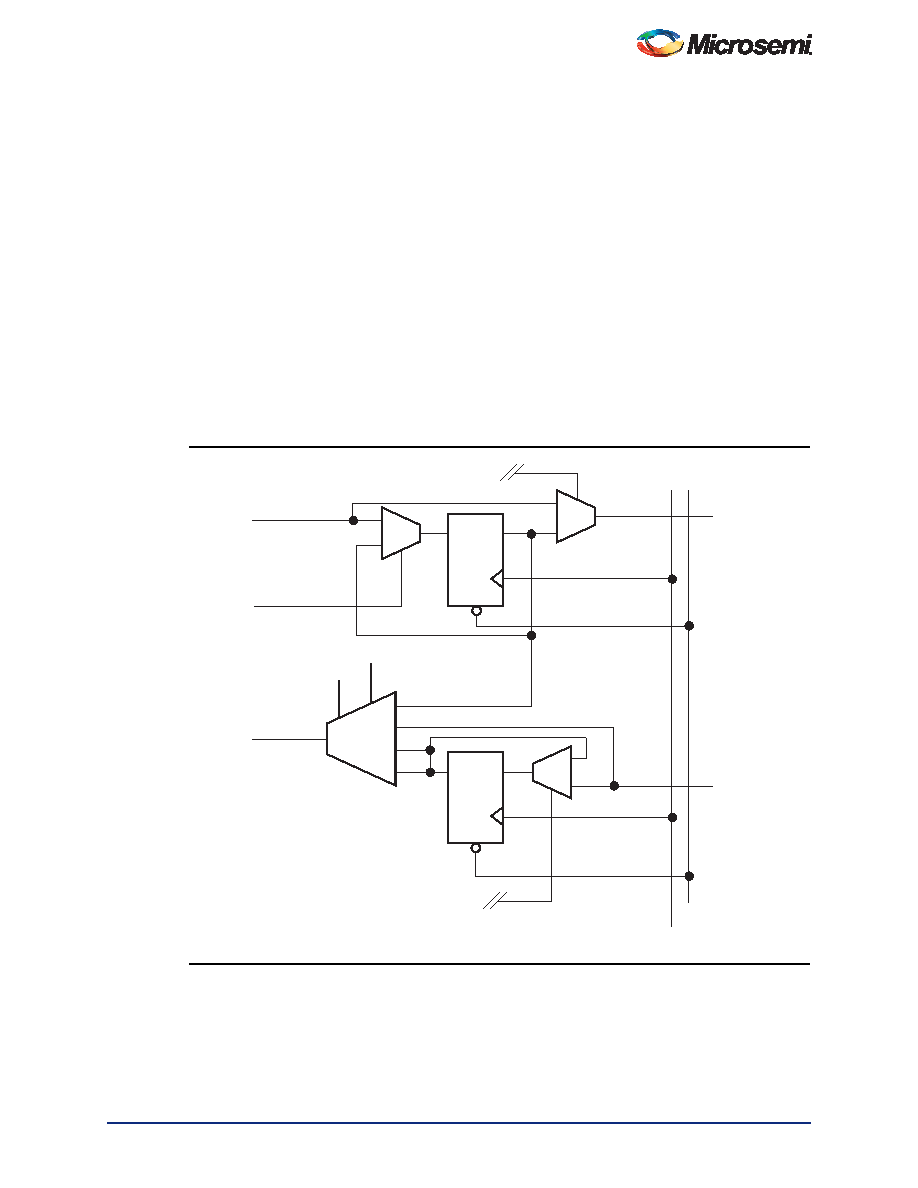- 您現(xiàn)在的位置:買賣IC網(wǎng) > PDF目錄4349 > A1460A-PQG208I (Microsemi SoC)IC FPGA 6K GATES 208-PQFP PDF資料下載
參數(shù)資料
| 型號: | A1460A-PQG208I |
| 廠商: | Microsemi SoC |
| 文件頁數(shù): | 3/90頁 |
| 文件大小: | 0K |
| 描述: | IC FPGA 6K GATES 208-PQFP |
| 標(biāo)準(zhǔn)包裝: | 24 |
| 系列: | ACT™ 3 |
| LAB/CLB數(shù): | 848 |
| 輸入/輸出數(shù): | 167 |
| 門數(shù): | 6000 |
| 電源電壓: | 4.5 V ~ 5.5 V |
| 安裝類型: | 表面貼裝 |
| 工作溫度: | -40°C ~ 85°C |
| 封裝/外殼: | 208-BFQFP |
| 供應(yīng)商設(shè)備封裝: | 208-PQFP(28x28) |
第1頁第2頁當(dāng)前第3頁第4頁第5頁第6頁第7頁第8頁第9頁第10頁第11頁第12頁第13頁第14頁第15頁第16頁第17頁第18頁第19頁第20頁第21頁第22頁第23頁第24頁第25頁第26頁第27頁第28頁第29頁第30頁第31頁第32頁第33頁第34頁第35頁第36頁第37頁第38頁第39頁第40頁第41頁第42頁第43頁第44頁第45頁第46頁第47頁第48頁第49頁第50頁第51頁第52頁第53頁第54頁第55頁第56頁第57頁第58頁第59頁第60頁第61頁第62頁第63頁第64頁第65頁第66頁第67頁第68頁第69頁第70頁第71頁第72頁第73頁第74頁第75頁第76頁第77頁第78頁第79頁第80頁第81頁第82頁第83頁第84頁第85頁第86頁第87頁第88頁第89頁第90頁

Accelerator Series FPGAs – ACT 3 Family
R e visio n 3
2 -3
The S-module contains a full implementation of the C-module plus a clearable sequential element that
can either implement a latch or flip-flop function. The S-module can therefore implement any function
implemented by the C-module. This allows complex combinatorial-sequential functions to be
implemented with no delay penalty. The Designer Series Development System will automatically
combine any C-module macro driving an S-module macro into the S-module, thereby freeing up a logic
module and eliminating a module delay.
The clear input CLR is accessible from the routing channel. In addition, the clock input may be connected
to one of three clock networks: CLKA, CLKB, or HCLK. The C-module and S-module functional
descriptions are shown in Figure 2-2 and Figure 2-3 on page 2-2. The clock selection is determined by a
multiplexer select at the clock input to the S-module.
I/Os
I/O Modules
I/O modules provide an interface between the array and the I/O Pad Drivers. I/O modules are located in
the array and access the routing channels in a similar fashion to logic modules. The I/O module
schematic is shown in Figure 4. The signals DataIn and DataOut connect to the I/O pad driver.
Each I/O module contains two D-type flip-flops. Each flip-flop is connected to the dedicated I/O clock
(IOCLK). Each flip-flop can be bypassed by nonsequential I/Os. In addition, each flip-flop contains a data
enable input that can be accessed from the routing channels (ODE and IDE). The asynchronous
preset/clear input is driven by the dedicated preset/clear network (IOPCL). Either preset or clear can be
selected individually on an I/O module by I/O module basis.
Figure 2-4
Functional Diagram for I/O Module
D
DATAOUT
D
Q
CLR/PRE
DATAIN
IOCLK
IOPCL
Y
D
Q
CLR/PRE
ODE
MUX
1
0
MUX
1
0
MUX
0
1
MUX
3
0
1
2
S1
S0
相關(guān)PDF資料 |
PDF描述 |
|---|---|
| EP2AGX95EF29C6 | IC ARRIA II GX FPGA 95K 780FBGA |
| EP2AGX65DF29I5 | IC ARRIA II GX FPGA 65K 780FBGA |
| 211667-1 | CONN D-SUB RCPT HSING 15POS HD |
| 211642-4 | CONN D-SUB PLUG 50POS CRIMP |
| EP1SGX25CF672C6N | IC STRATIX GX FPGA 25KLE 672FBGA |
相關(guān)代理商/技術(shù)參數(shù) |
參數(shù)描述 |
|---|---|
| A1460A-STDCQ196B | 制造商:未知廠家 制造商全稱:未知廠家 功能描述:ASIC |
| A1460A-STDCQ196M | 制造商:未知廠家 制造商全稱:未知廠家 功能描述:ASIC |
| A1460ASTDPQ207B | 制造商:未知廠家 制造商全稱:未知廠家 功能描述:ASIC |
| A1460ASTDPQ207C | 制造商:未知廠家 制造商全稱:未知廠家 功能描述:ASIC |
| A1460ASTDPQ207M | 制造商:未知廠家 制造商全稱:未知廠家 功能描述:ASIC |
發(fā)布緊急采購,3分鐘左右您將得到回復(fù)。